


FROM THE SENIOR EXECUTIVE DIRECTOR
One of the cornerstones in the creation of the Harte Research Institute (HRI) was to provide a transdisciplinary approach to ensuring conservation of the Gulf. By coalescing multidisciplinary fields such as marine policy and law, natural resource economics, and the marine sciences, HRI fostered cross-disciplinary research and expertise all in one place.
This was a unique vision at the time, defining a key niche for HRI, which has played an important role in the institute’s successes.
In this edition of Third Coast Lines, Kristina Alexander, HRI’s Endowed Chair for Marine Policy and Law, examines laws and policies that have shaped the Gulf over the last 25 years, highlighting the contributions HRI scientists and researchers have made to policies and laws impacting the Texas Gulf Coast and beyond.
Together, these stories underscore how science can inform policy that leads to the best decisions. These unique collaborations remain vital to securing a sustainable future for the Gulf.

GREG STUNZ, PH.D. SENIOR EXECUTIVE DIRECTOR
ABOUT THIS PUBLICATION
Third Coast Lines, a publication of the Marine Policy and Law program at the Harte Research Institute, shares information about the laws and policies shaping major issues in the Gulf. Its mission is to inform the community to create a healthier, more resilient Gulf.


Things change. The shores and the waters of the Texas coast change over time, as do the laws affecting those areas. In honor of the 25th Anniversary of the Harte Research Institute (HRI), this article will discuss changes to the landscape of coastal and marine policy and law over the last 25 years, including those policies led or influenced by HRI. By recalling 25 years of success at HRI, this issue of Third Coast Lines is a way to look forward.1
IssueswithFreshwater,orHRIMeaRiver
To talk about the coast, we need to start upstream. All the rivers in Texas flow into the Gulf, sooner or later. Yet under state law, “the water of … every flowing river, natural stream, and lake, and of every bay or arm of the Gulf of Mexico” is the property of the state.2 This authority allows the state to take or divert water from its natural path to use for other purposes, such as irrigation, industry, or municipal uses. That water, once taken or diverted, might no longer reach the coast.

It may seem that the Gulf does not need water, and sending water into the ocean is a “waste.” But it is important to maintain freshwater flows from rivers to keep salinity levels of estuaries and bays balanced. Most estuaries have “brackish” water, saltier than freshwater but with lower salinity than seawater. Oysters live in brackish water, as do juvenile fish of all sorts, and shrimp. Estuaries are described by the U.S. Army Corps of Engineers as “a nursery ground for ‘almost all of the economically important fish and shell fish’.”3 Without the estuarine mixing of fresh and saltwater, the species that depend on that ecosystem fail.
At the beginning of this century, Texas formed scientific advisory committees to assess how much water was needed for a healthy environment. HRI’s Endowed Chair for HydroEcology, Dr. Paul Montagna (2006), served on those committees. Their reports developed standards and plans to identify and quantify the coast’s water needs. That information eventually was incorporated into Senate Bill 3 (S.B. 3) in 2007. Montagna and nine other experts developed 13 guidance documents creating environmental flow procedures under S.B. 3. By 2014 the Texas Commission on Environmental Quality (TCEQ) set environmental flow standards for every river and estuary in Texas. However, Montagna’s most recent book, Freshwater Inflows to Texas Bays and Estuaries, asserts S.B. 3 has not been fully realized. Water inflow standards were not set for every bay, and new water permits do not include water inflow protection language.
1 This article gives date each Chair joined HRI after they are introduced.
2 Tex. Water Code § 11.021(a).
3 See, e.g. State of Louisiana v. Lee, 596 F. Supp. 645, 653 (E.D. La. 1984), vacated on other grounds 758 F.2d 1081 (5th Cir. 1985).

Additionally, almost all surface water in non-drought years was appropriated prior to S.B. 3’s implementation, limiting what increases in waterflow to the estuaries were even possible.
In 2010, the Aransas Project v. Shaw lawsuit alleged the lack of freshwater inflow to the Aransas National Wildlife Refuge during an extended drought was to blame for the starvation deaths of 8.5% of endangered whooping cranes during the winter of 2008-2009. Montagna was among experts giving testimony establishing that the crane’s primary food –blue crab – does not thrive in the high saline environment created in the estuary when inflows dry up. The lawsuit claimed the state’s failure to provide adequate freshwater to the area violated the Endangered Species Act (ESA), and a federal court halted TCEQ from issuing new permits to withdraw water from rivers that feed that estuary.3 The Court of Appeals reversed, however, saying that TCEQ’s administration of water permits was not the foreseeable or direct cause of the birds’ deaths: drought was.

Source: Conservation and Biodiversity Lab at HRI
Whooping crane populations have climbed since that decision. In 2025, the Aransas population of whooping cranes was 557, up from 177 in 2000. Because of his expertise on habitat and conservation, Dr. Dale Gawlik, the James A. “Buddy” Davidson Endowed Chair for Conservation and Biodiversity at HRI (2021), is on the international team developing the whooping crane’s recovery plan to ensure the necessary conservation standards are in place as required by the ESA. Water security for the crane’s habitat was aided in 2022 by a three-year agreement to deliver 200 acre-feet of water annually to the estuary for the purpose of whooping crane conservation.4
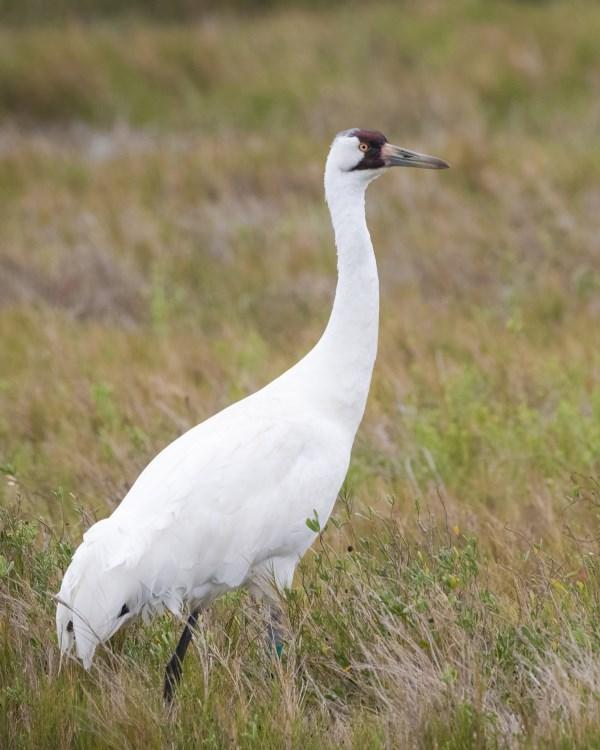
Water flow is also the focus of Dr. Michael Wetz, HRI Chair for Coastal Water Health (2018), but he researches water quality rather than quantity. His program, Bringing Baffin BackTM, began in 2012 in response to the concerns of lifetime fishers of Baffin Bay who noticed reoccurring signs of poor water quality such as fish kills, brown tides, and jelly flesh in 75% of black drum. For years, 21 volunteers collected water data, revealing that levels of dissolved organic nitrogen were among the highest found on the Texas coast and likely the major factor in harmful brown tide algal blooms. While the Clean Water Act (CWA) prohibits adding pollutants to rivers and streams, Texas sets no numerical criteria for concentrations of nitrogen in rivers, streams, or estuaries,5 meaning that even though high levels contribute to harmful fish kills, state law does not enforce nitrogen concentration limits in those waterbodies. Nitrogen in Baffin Bay comes from runoff or unregulated discharges, such as faulty septic tanks, agriculture and ranching, or failing wastewater plants. In 2025 the Texas legislature passed S.B. 7, which includes funding for deficient or deteriorating wastewater treatment facilities, perhaps fixing that source of pollution.
3 Aransas Project v. Shaw, 930 F. Supp. 2d 716 (S.D. Tex. 2013), rev’d 774 F.3d 324 (5th Cir. 2014).
4 Texas Water Trade Press Release, Texas Water Trade Announces Water Purchase to Protect Endangered Whooping Cranes on Texas Coast (Oct. 2022), https://tinyurl.com/mrx633cp.
5 See TCEQ, https://www.tceq.texas.gov/waterquality/standards/WQ_standards_nutrient_criteria.html.
LawontheBeach
Contaminated runoff was also the focus of a 2000 federal law, the Beaches Environmental Assessment and Coastal Health Act (BEACH Act). The BEACH Act requires states to track when pollution from fecal matter makes waters unsafe, typically occurring after a heavy downpour. States close beach access when that happens.6
Abeach is more than merely where the water meets land. It involves intricate issues of ownership, rights, and uses. Texans have long enjoyed beaches, using them as public thoroughfares even before Texas became a state. One Texas court found people drove on West Galveston beaches at least since 1836: “at least six or eight carriages could ride abreast.”7 Beach access is so important to Texans that in 2009 language from the 1959 Open BeachesAct was adopted into the state Constitution, affirming “that the public … has an unrestricted right of ingress to and egress from a public beach,” referring to state-owned beaches between the mean low tide line and the line of vegetation on “the seaward shore of the Gulf of Mexico.” Art. I, Sec. 33. That wording became the supreme law of Texas, but it was not the last word.
Open beaches were openly litigated. In 2010 the Supreme Court of Texas in Severance v. Patterson8 construed beach access narrowly, finding “rights in private property [are] essential and fundamental,” and requiring explicit easements for the public to use the area between the vegetation line and mean high tide, sometimes called the dry sand. Instead of beaches being a “continuous right in the public” as expressed in the Constitution, the Court ruled that the public must demonstrate a right “since time immemorial” to have access, referring to the 1977 amendment of the Open Beaches Act, without acknowledging the difficulty in proving something existed before any record of it (to meet the definition of immemorial). It is a decision that favors the few – those with beach-front property – over the many who enjoy Texas beaches.
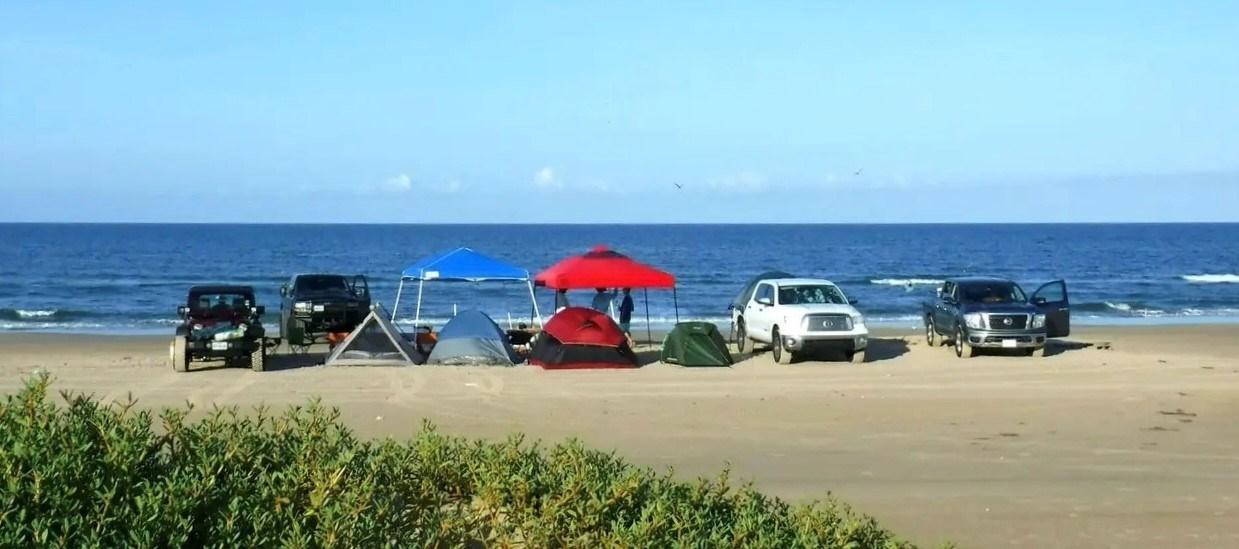

The open beaches dispute is a good demonstration of HRI’s interdisciplinary focus at work. Dr. Richard J. McLaughlin (2005), the first chair named to HRI, who served as the Endowed Chair for Marine Policy and Law until 2021, examined the legal impacts of the Severance v. Patterson decision in a widely-referenced law review article.9 Also, the state brought in Dr. James Gibeaut, Endowed Chair for Coastal and Marine Geospatial Sciences (2007), as an expert witness in Severance v. Patterson to explain the scientific basis of how the line of vegetation changes. He also testified that natural causes were the background reason for beach erosion at the site in question. In 2025, the Texas Legislature further recast the balance of rights regarding the public’s beach access in legislation authorizing closing public access to beaches for “space-related” activity. House Bill 5246, enacted on June 20, 2025, put the decision to close a beach area or a highway to a beach in the
6 For an interactive map showing the status of beach waters, see texasbeachwatch.com.
7 Feinman v. State, 717 S.W.2d 106, 111 (Tex. Civ. App. 1986).
8 370 S.W.3d 705 (Tex. 2012), reprinting the original decision of 345 S.W.3d 18 (Tex. 2010) (which was withdrawn pending rehearing).
9 Richard J. McLaughlin, Rolling Easements as a Response to Sea Level Rise in Coastal Texas: Current Status of the Law after Severance v. Patterson, 26 J. Land Use & Envt’l L. 365 (Spring 2011).

hands of the Texas Space Commission Board of Directors, giving municipalities the authority to deny the closure. However, it does not stop beach closures from happening on summer weekends or holidays as other bills would have done.
SaltyTalesofMarineWaterQuality
Other state laws in the past 25 years addressed marine water quality. In 2015 the Texas Water Code was amended to expand TCEQ’s authority to issue discharge permits for “the desalination of seawater into the portion of the Gulf of Mexico inside the territorial limits of the state.”10 While no seawater desalination facilities have been built, HRI has helped inform the permitting process, as any permit should be based in sound science. Dr. Greg Stunz (2007), now the Senior Executive Director of HRI, and Montagna were called as experts during the administrative review of the Port of Corpus Christi’s permit for a desalination facility. Stunz provided expert testimony about probable impacts on the marine environment if highly salinated discharge from the proposed facility was not diluted, and Montagna provided expertise regarding the salinity and water flow patterns in the Corpus Christi Bay.
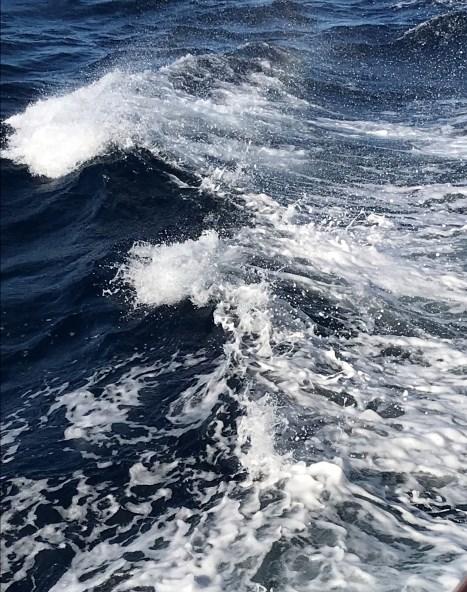
Onshore events are not the only impacts on the Gulf’s water quality, as the world learned in dramatic fashion on April 20, 2010, when an exploratory oil well blew up, spilling 4,000,000 barrels of oil. Deepwater Horizon is the largest oil spill in U.S. waters, and its impacts were felt by all five Gulf states. Leading the science to assess the spill’s impact on natural resources were Montagna, who led the deep sea team assessing impacts to soft-bottom benthic resources, and Gibeaut, who studied the impacts to the coast. Gibeaut developed a technique for mapping the coastal impacts from the oil and cleanup operations, using high-resolution vertical aerial photography and an innovative statistical design.
In 2014, a federal court assigned liability for the spill: BP –67%; Transocean – 30%; and Halliburton – 3%.11 As part of a settlement, BP agreed to pay $4.4 billion plus penalty interest from 2017 to 2032 into a trust fund to be used for coastal restoration projects. The money is divided into different programs for different Gulf states. Again, HRI stepped up. Under one spill-funded program, HRI was designated a Center of Excellence to oversee research grants in the fields of science, technology, and monitoring for the Texas coastal region. Some other awards of note from this funding: Gibeaut was named as Texas’ science advisor to develop restoration plans funded by the trust; and Gawlik won a grant to develop a system to identify the most meaningful coastal islands to protect for coastal nesting birds.

In fact, science and law are coming together regarding coastal nesting birds. As part of a $2.1 million grant from the oil spill settlement, Gawlik’s team is using drones, field work, and computer models to determine which of the state’s 300 coastal rookery islands are and will continue to be prime nesting territory for birds such as the threatened reddish
10 Tex. Water. Code § 26.027.
11 In re: oil spill by the oil rig “Deepwater Horizon” in the Gulf of Mexico, 21 F. Supp. 3d 657, 747 (E.D. La. 2014).
egret and sooty tern, or the at-risk black skimmer. While Gawlik’s team is figuring out how to get birds on the islands, KristinaAlexander, Endowed Chair for Marine Policy and Law (2022), is trying to find ways to keep people off those islands during nesting season. She developed a Law Enforcement Guide to explain the existing complicated framework of laws protecting coastal nesting birds and a report on ways to increase coastal nesting bird protection.
Naturevs.Nurdle
Science and law do not always join together. For example, scientists have changed how we look at plastic pollution across the last 25 years, learning that microplastic levels in the Gulf “are among the highest reported globally.”12
This can be a problem when tons of plastics are dumped into the water. In the 2019 case of San Antonio Bay Estuarine Waterkeeper v. Formosa Plastics Corp., the manufacturer’s permit allowed the discharge of “trace amounts” of “floating solids” but did not identify plastic pellets – aka nurdles –or a specific quantity. The manufacturer said discharging 28,060 nurdles a day (which is more than a pound) into the Matagorda Bay complied with its CWAdischarge permit.13
The federal court found that it did not, and the company settled with the environmental plaintiffs for $50 million plus additional penalties for future nurdle discharges –purportedly the largest win in a CWAsuit brought by a private party. The Texas legislature considered bills in 2021, 2023, and 2025 to regulate nurdle discharges, but the bills did not leave committee. Afederal bill introduced in 2023, H.R. 7634/S. 2337, would have prohibited discharging pre-production plastic materials into waters, but the bill went nowhere. Thus, law does not require other nurdle manufacturers or users to have a zero discharge limit.
Sometimes a good policy is the answer when the law fails to act. Jace Tunnell, HRI Director of Community Engagement (2023), leads the Nurdle Patrol, a program begun in 2018 after a nurdle spill off North Padre Island. The program has people picking up nurdles worldwide and recording data to identify ways to limit plastic marine pollution.
SeaCreatures

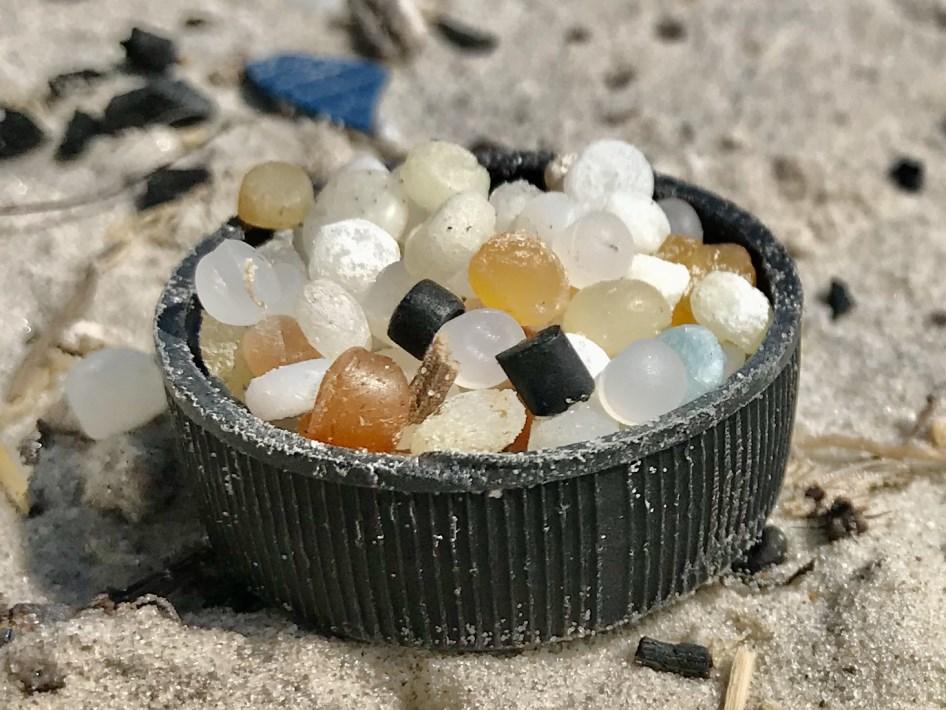
Having HRI scientists around these last 25 years has helped Texans rethink the things they thought they knew well. For example, Texas’s once mighty oyster industry declined during this time, which may be attributed to the decreased amount of freshwater inflows. Bays once described by Texas Parks & Wildlife Department (TPWD) as among the few in Texas having “good freshwater inflows”14 – Galveston and Matagorda – had areas closed to oyster harvests in 2024 due to a “low abundance of legal-sized oysters.”15 The state reports that in 2000-2003, 730 oysters per
12 Rosana Di Mauro, et al., Abundant Plankton-sized Microplastic Particles in Shelf Waters of the Northern Gulf of Mexico, Environmental Pollution, Vol. 230 (Nov. 2017).
13 San Antonio Bay Estuarine Waterkeeper v. Formosa Plastics Corp., No. 6:17-cv-0047, *12 (S.D. Tex. 2019).
14 See TPWD, Oysters in Texas Waters (undated), https://tpwd.texas.gov/fishboat/fish/didyouknow/coastal/ oysterarticle.phtml.
15 TPWD Press Release, TPWD Closing Oyster Harvest Areas in Galveston and Matagorda Bays (Dec. 19, 2024), https:// tpwd.texas.gov/newsmedia/releases/?req=20241219c.

hour were harvested in Galveston Bay, but in 2019-2022 the numbers dropped to just 221 oysters an hour.16
Dr. Jennifer Beseres Pollack, the Larry D. McKinney Endowed Chair for Coastal Conservation and Restoration at HRI (2018), serves on two TPWD advisory committees based on her expertise in oyster reef management. Part of that work includes advising how long oyster beds need to be closed to harvesting to recover. She began her Sink Your ShucksTM program in 2009, creating 45 acres of oyster reefs from 3,000,000 pounds of shells from restaurants and other places. Texas law followed her lead. In 2017, the Legislature began requiring commercial oyster harvesters to return 30% of their shells to oyster beds to help offset lost reefs. In 2019, when Texas became the last Gulf state to allow oyster mariculture, HRI led the way, developing the Oyster Resource and Recovery Center (ORRC) to train the workforce, funded by the oil spill trust fund. Now Texas has 14 fully permitted farms. And thanks to a 2025 law, S.B. 1215, farmed-raised oysters may be used to rebuild natural oyster beds in state waters.
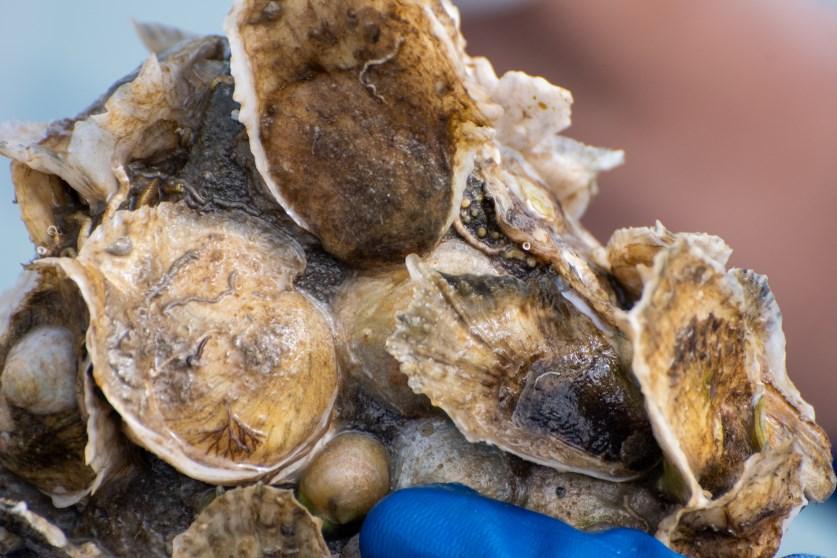
It is no surprise that HRI has a big heart for fisheries. Not only does the view from the HRI building show when it s a good day to be fishing, its longest-serving Sr. Executive Director, Dr. Larry McKinney, came to Harte in 2008 after serving as Director of Coastal Fisheries and Sr. Director of Aquatic Resources at TPWD. Also, both Stunz and Dr. Kesley Banks ’19 have served on the Gulf Fisheries Management Council. Kristina Alexander served on the national Marine Fisheries Advisory Committee (MAFAC) for NOAA. The institute’s newest chair, Dr. Geret DePiper, Endowed Chair for Resource Economics (2025), was an economist on a National Marine Fisheries Service (NMFS) Scientific and Statistical Committee for five years before joining HRI.

At the heart of HRI is the knowledge that science can inform law and policy when change is needed. For example, HRI’s Center for Sportfish Science and Conservation found that approximately 85% of red snapper released after being hooked did not survive. Basically, the snapper suffered the fish version of the bends, known as barotrauma, from being pulled up from deep down and became easy prey once released. HRI’s work helped bolster the DESCEND Act of 2020,17 a federal law requiring Gulf fishers to assist reef fish to get back to depth by either puncturing the swim bladder or using a weighted descender to lower them.
Another major legal change to reef fish management came in 2015 when Congress extended the reef fish management authorities of Louisiana, Mississippi, and Alabama to 9 nautical miles (from 3 nm) to match the Gulf jurisdictions of Texas and Florida. Gulf states cheered again in 2018 when state management was implemented,
16 Evan Garcia, Climate change, Overharvesting Exacerbating Texas Oyster Decline (Dec. 4, 2023), https://www.reuters.com/ sustainability/land-use-biodiversity/climate-change-overharvesting-exacerbating-texas-oyster-decline-2023-11-28/.
17 Direct Enhancement of Snapper Conservation and the Economy through Novel Devices Act of 2020, Pub. L. 116-340; 134 Stat. 5129 (2021).
giving states control of setting recreational fishing seasons for red snapper in federal waters after Congress nudged the NMFS.18 The issue of how many red snapper are in the Gulf remains the crux of red snapper management. HRI’s 2023 Great Red Snapper Count identified the fish’s population at 118,000,000 – higher than the NMFS stock assessment used to set limits in federal waters. Nevertheless, anglers are enjoying long fishing seasons, and the snapper population remains robust. Red snapper management shows how good science backs wise practices. The other side of the coin is that bad data can mean bad policy. For example, in 2015 the federal government’s watchdog agency, the General Accountability Office, found that NMFS was still using a 1979 process that found phone numbers in coastal county phonebooks, calling landlines to ask people about their fishing. The program was not changed until 2018, pushed by the Modernizing Recreational Fisheries ManagementAct of 2018. That law was informed by past and present HRI senior executive directors, Drs. McKinney and Stunz, whose work on commissions formed the foundational science on how recreational fisheries are managed under this law.19 The new recreational data, gleaned from using licensed fisher databases to identify households with people who fish, found that the old school phone calls resulted in “significantly lower estimates of recreational effort” for Gulf reef fish; lane snapper estimates that were about half of what was occurring; and that the cobia catch limits needed to be lowered to prevent overfishing.20
DeepThoughtsonMarineHabitat
Some of HRI’s contributions over the last 25 years lie at the bottom of the sea. In 2015, two areas in the Gulf were named in tribute to HRI: the Tunnell Mound on the continental slope south of Louisiana, named after Dr. Wes Tunnell, one of the original HRI Chairs (and father of Jace Tunnell); and the Harte Bank, named after HRI, located on the continental shelf off the southern coast of Texas.
In 2000, the Coral Reef Conservation Act was enacted, addressing coral reef ecosystems by appropriating $64 million for reef conservation actions. The law was reauthorized in 2022 citing such issues as increasing ocean temperatures, coral bleaching, invasive species, and illegal fishing for why the act was needed. Dr. Keisha Bahr, HRI Chair for Coral Reef and Ocean Health (2024), developed a coral citizen science tool involving a color chart similar to what a dentist uses to pick the color of your replacement tooth or crown. While white may be an ideal color for teeth, bleached white is a bad sign for corals. The chart can be used by recreational divers to check for coral health, and then share their findings.
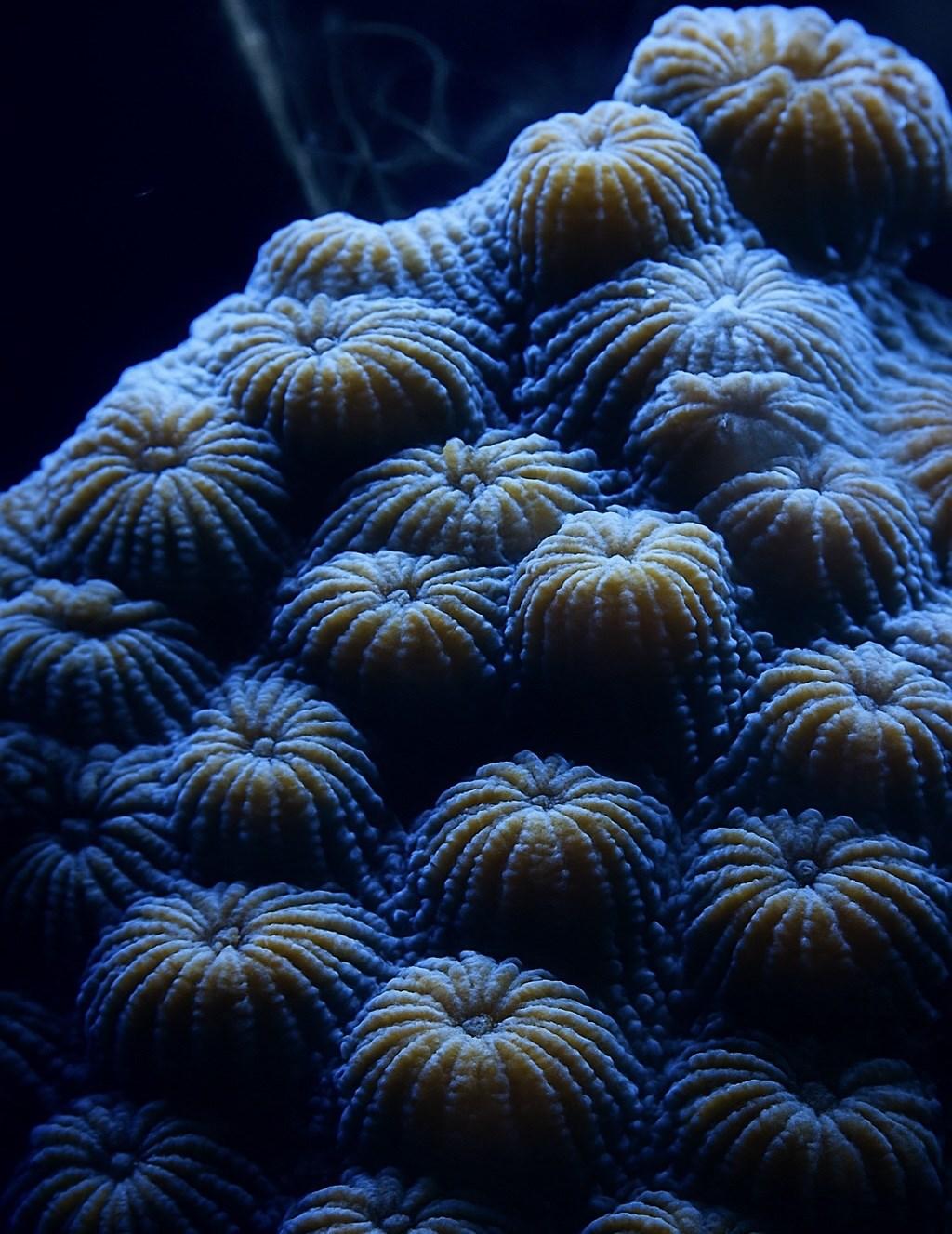

The National Marine Sanctuaries Act (NMSA) protects more than 20 species of coral in the Flower Garden Banks National Marine Sanctuary (the sanctuary). Bahr is helping to conserve those corals by serving as a science partner and collaborator with the Sanctuary. In 2021, the Sanctuary
18 Consolidated Appropriations Act of 2018, Pub. L. No. 115-141, 132 Stat. 405.
19 Pub. L. 115-405; 132 Stat. 5355 (2018).
20 87 Fed. Reg. 48610 (Aug. 10, 2022); 86 Fed. Reg. 72854 (Dec. 23, 2021); 87 Fed. Reg. 40478 (July 7, 2022); respectively.

was expanded from 56 square miles to 160 square miles under the NMSA to protect “the northernmost coral reefs in the continental United States.”21
Some corals also are protected under the ESA, including the staghorn coral (Acropora cervicornis) fragments that Bahr relocated to HRI from an at-risk artificial reef made of discarded tires in Florida. Three hundred corals were moved to Corpus Christi.

Perhaps the biggest flip turn this century in Gulf conservation policy is about the species now known as the Rice’s whale. This whale was not identified as a distinct species until 2021. Until then, it was believed to be a subspecies of the Bryde’s whale, a whale with a worldwide population of 90,000 to 100,000. There are thought to be fewer than 100 Rice’s whales left all in the Gulf. As far as we know. In 2024, the whale popped up in parts of the Gulf where it had never been verified before: notably 50 miles off Corpus Christi, and as far south as Tampico, Mexico. Until then, the whale’s habitat was thought to be between Tampa, Florida and Mobile, Alabama, favoring 200 meter waters. There is more to learn about this whale.
The ESA proved instrumental this century regarding the recovery of some coastal creatures. In 2009, for example, the brown pelican was taken off the list of endangered and threatened wildlife after its populations rebounded, making a remarkable comeback. In 1973, Texas had 12 brown pelicans of breeding age, and now they’re loitering on docks everywhere. The Migratory Bird Treaty Act, and other laws, still protect these birds.
NotInvited,Won’tLeave:InvasiveSpeciesintheGulf
New, uninvited species joined our ecosystem this century. They include the lionfish (Pterois volitans and P. miles), a spikey creature which swam its way into the Gulf in 2009 and made its way to the Texas coast in 2011.22 It likely came to U.S. waters as the result of aquarium releases.
HRI scientists documented the first lionfish sighting in the Texas Coastal Bend in 2012. The fish crashed the reef systems of the Gulf, eating red snapper, grouper, and other key species. Non-indigenous species illustrate the futility of laws in the face of an ecologically dominant species.
Conclusion

Changing times mean changing laws, and those laws need our science. Ed Harte was ahead of the times when he envisioned an interdisciplinary institute, where marine scientists worked side-by-side with legal experts to solve some of the Gulf’s most pressing issues. And the success is evident. From when Ed Harte created HRI in 2000 to the present, the Harte Research Institute has addressed the laws that alter or improve the natural resources of coastal Texas. HRI’s vision remains the same: an ecologically and economically sustainable Gulf. As shown by these multiple successes over 25 years, thoughtful legislation informed by science will help realize that vision.
21 86 Fed. Reg. 4937 (Jan. 19, 2021).

